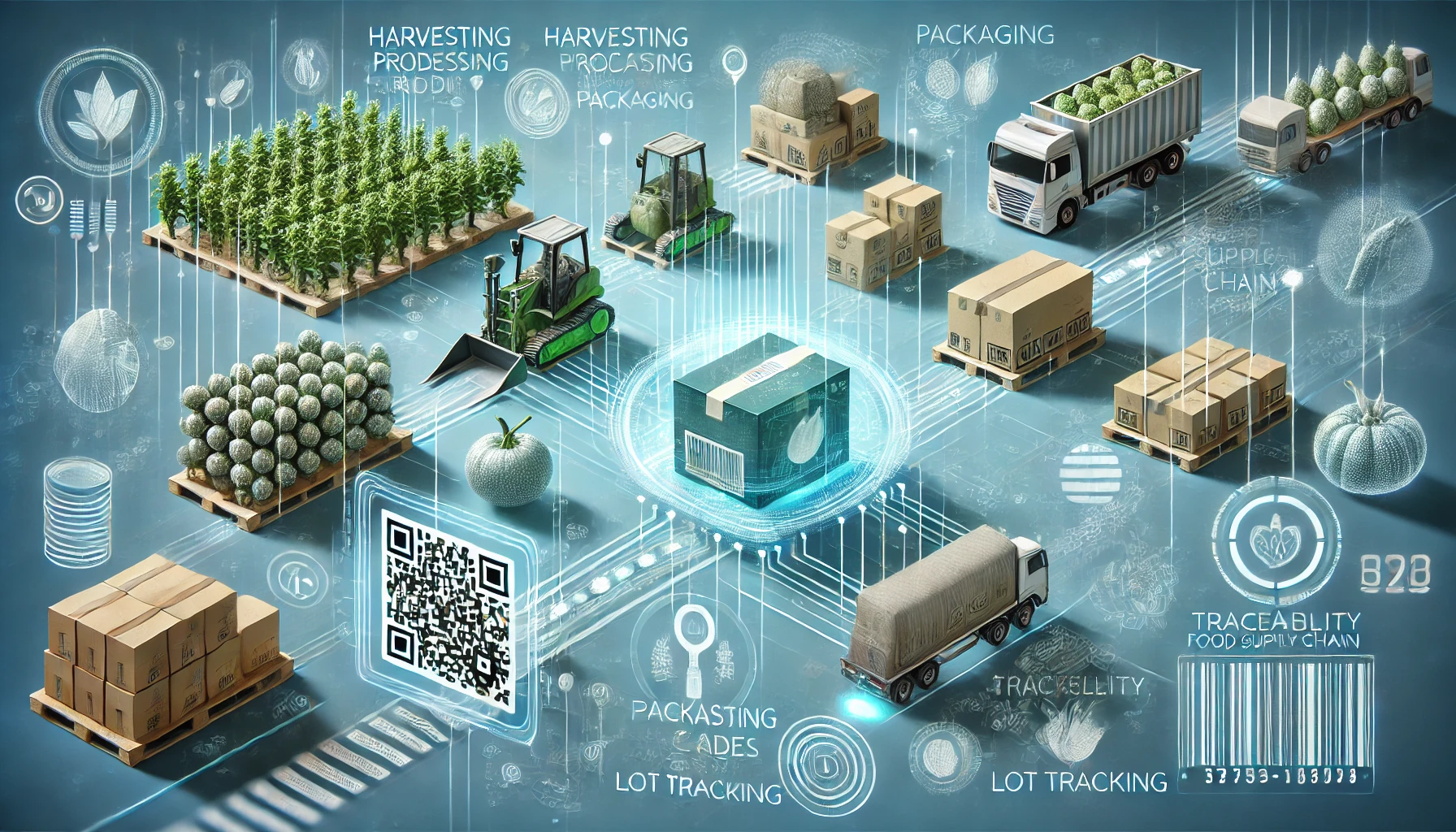- Published at
FDA's Food Traceability List (FTL): What You Need to Know

A comprehensive guide to the FDA's Food Traceability List and why automated no-code solutions are essential for compliance with these complex requirements.
Table of Contents
- What is the FDA Food Traceability List?
- Foods on the Traceability List
- Fresh Produce
- Seafood
- Dairy Products
- Other Foods
- Exemptions from Traceability Requirements
- How to Determine if Your Products Are on the FTL
- 1. Check the Commodity Description
- 2. Consider Processing Status
- 3. Verify Exemptions
- 4. Consult FDA Resources
- Compliance Timeline for FTL Foods
- Next Steps for Businesses with FTL Foods
- The Technology Imperative for FTL Compliance
- Why Automation is Essential
- The Dangers of Custom-Coded Solutions
- Benefits of No-Code Traceability Platforms
- Common Questions About the FTL
- ❓ What if my product contains an FTL food as an ingredient?
- ❓ Do imported FTL foods require traceability records?
- ❓ How often does the FDA update the Food Traceability List?
- Need Help Determining Your FTL Compliance Requirements?
- Additional Resources
What is the FDA Food Traceability List?
The Food Traceability List (FTL) is a critical component of the FDA’s Food Traceability Rule under FSMA Section 204. It identifies specific high-risk foods that require enhanced traceability records beyond what’s already mandated by the Bioterrorism Act.
Foods on this list have been determined through a risk-ranking model to pose greater public health risks due to:
- Historical association with foodborne illness outbreaks
- Likelihood of contamination
- Severity of potential illnesses
- Likelihood of consumer exposure
- Vulnerability of the production process
Foods on the Traceability List
The FDA’s Food Traceability List includes the following categories:
Fresh Produce
- Cucumbers
- Fresh-cut fruits and vegetables
- Leafy greens (including romaine lettuce)
- Melons
- Peppers
- Sprouts
- Tomatoes
Seafood
- Finfish (certain species)
- Smoked finfish
- Crustaceans
- Molluscan shellfish, bivalves
Dairy Products
- Cheeses (soft ripened or semi-soft)
- Fresh soft cheese
- Yogurt
Other Foods
- Shell eggs
- Nut butter
- Ready-to-eat deli salads
📌 Important: The list may be updated periodically as the FDA reassesses risk factors. Always check the official FDA website for the most current information.
Exemptions from Traceability Requirements
Not all businesses handling FTL foods need to comply with the full requirements. Exemptions include:
- Small farms with less than $25,000 in annual produce sales (3-year average)
- Small retail food establishments with fewer than 10 full-time equivalent employees
- Certain farm-to-school and farm-to-institution programs
- **Foods that undergo a kill step that significantly minimizes pathogens
- Certain types of small producers, manufacturers, and retail food establishments
However, even exempt entities may need to provide documentation of their exempt status upon request.
How to Determine if Your Products Are on the FTL
Follow these steps to determine if your products require enhanced traceability:
1. Check the Commodity Description
Review the specific commodity descriptions in the FDA’s official FTL documentation.
2. Consider Processing Status
Some foods are only on the list in certain forms (e.g., fresh-cut vs. whole).
3. Verify Exemptions
Determine if any exemptions apply to your specific operation.
4. Consult FDA Resources
Use the FDA’s lookup tool or commodity definition reference to confirm status.
Compliance Timeline for FTL Foods
The FDA has established a phased compliance timeline:
- January 2023: Final rule published
- January 2025: Compliance date for most covered entities
- January 2026: Enforcement discretion period ends
During this transition period, the FDA is focusing on education and technical assistance rather than strict enforcement.
Next Steps for Businesses with FTL Foods
If your products appear on the Food Traceability List, you should:
- Map your supply chain to identify all Critical Tracking Events
- Develop a traceability plan specific to your FTL products
- Implement a lot coding system that meets FDA requirements
- Choose no-code automation solutions rather than custom development
- Train staff on using automated systems effectively
- Test your traceability system with mock recalls
- Measure response time improvements from automation
The Technology Imperative for FTL Compliance
Manual traceability systems are increasingly inadequate for FDA compliance:
Why Automation is Essential
- 24-hour response requirement is difficult to meet with manual processes
- Data accuracy is compromised by manual entry and paper records
- Supply chain complexity makes manual tracking nearly impossible
- Recall scope expansion occurs when traceability data is incomplete
The Dangers of Custom-Coded Solutions
- Development timelines often exceed compliance deadlines
- Regulatory changes require constant code revisions
- Validation requirements add significant time and cost
- Maintenance burden grows with each update
- Knowledge dependency on specific developers creates business risk
Benefits of No-Code Traceability Platforms
- Rapid implementation to meet compliance deadlines
- Configurable workflows without programming knowledge
- Pre-built FDA compliance templates ensure regulatory alignment
- Regular updates to address changing requirements
- Reduced training needs with intuitive interfaces
- Lower total cost of ownership compared to custom development
Common Questions About the FTL
❓ What if my product contains an FTL food as an ingredient?
If the FTL food is the primary ingredient, traceability requirements likely apply. The FDA provides guidance for multi-ingredient products.
❓ Do imported FTL foods require traceability records?
Yes. Importers of FTL foods must maintain the same level of traceability records as domestic producers.
❓ How often does the FDA update the Food Traceability List?
The FDA reviews and may update the list every five years based on current risk assessments.
Need Help Determining Your FTL Compliance Requirements?
Understanding whether your products fall under the Food Traceability List requirements can be complex. Our team specializes in FDA compliance and can help you navigate these regulations.
👉 Contact us today for a consultation or compliance assessment.